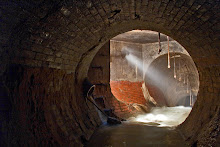My chosen passage is the opening memory sequence. I think this really distinguishes itself from other works by not just setting the scene by instantly creating the atmosphere. It’s filled with a visualistic style of storytelling as it is a memory (and more dependent on what you see through the ‘mind’s eye’ than anything else), Ondjaante is trying to signify the fragmented nature of memory and perspective and that memories are not complete – not even in the remotest sense. The introduction of Patrick Lewis here is working on a farm is a different type of memory that I’ve not seen done before in any other novel, the memories are personal and vivid, there’s lots of moving around between the different parts and we don’t get all of the facts in the a linear fashion which is very interesting because it draws the reader in to find out more about what is happening. It’s also interesting to point out that Ondaatje is trying to imply that maybe your childhood experiences are the most significant ones that you can have in your life. He also raises the question of what “fate” has to do with the novel – in part being be a moving narrative plot or more spiritually to do with placing the character of Patrick in a situation and fleshing out details and memories for us in order for him to be believable. Throughout the novel, I found this the most important point because Ondaatje always referred back to those hazy but often vivid instances of Patrick’s childhood memory. I think Ondaatje is trying to set up the use of memory as a central point in which the rest of the story revolves around. This isn’t really about pushing forward a narrative f a theme but the collective memories (especially those childhood memories from the opening sequence) in order to ask different questions regarding what is more important as an aspect of identity.
The style of writing is also incredibly detailed in its descriptions – not in sense of pulling off descriptions and experiences but about creating the conjunctive use of visual treatment and very muted and soft language that made it interesting in the memory sequence in the opening. This muted treatment of language and visuals also refers back to how we as readers may recall memories – not picture perfect or even very detailed but just a simple movement of images in a coherent fashion. Ondaatje is also trying to make the reader think about how wrong memory is as well, what you recall may not actually be what happened and the way the Patrick is unsure of what to do about the runaway cow later on and perhaps this is what leads us to remind readers about the use of memory and dream as images of a forgotten past.
Thursday, 15 November 2007
Subscribe to:
Post Comments (Atom)

1 comment:
Interesting points here, but can I encourage you to give specific examples to illustrate what you mean: eg. ‘the conjunctive use of visual treatment and very muted and soft language that made it interesting in the memory sequence in the opening’ – I am unsure what you mean by ‘soft language’, so an example would be helpful. (This is even more crucial for your final essay so please bear this advice in mind for that!)
When you say ‘Ondaatje is also trying to make the reader think about how wrong memory is as well, what you recall may not actually be what happened’ - I would agree that this is certainly something that comes up elsewhere in the novel, but I have a hard time finding evidence for it in this particular passage. Indeed, there are details given that the young Patrick would be unlikely to know, that would seem to corroborate his story (that some workers will die of pneumonia and some of sulphur in their lungs when they work elsewhere in other seasons). To me it seems as if the novel wants to lull the reader into trusting the narrative voice before starting to subtly undermine its authority and the limits of what it and the characters themselves know.
Post a Comment